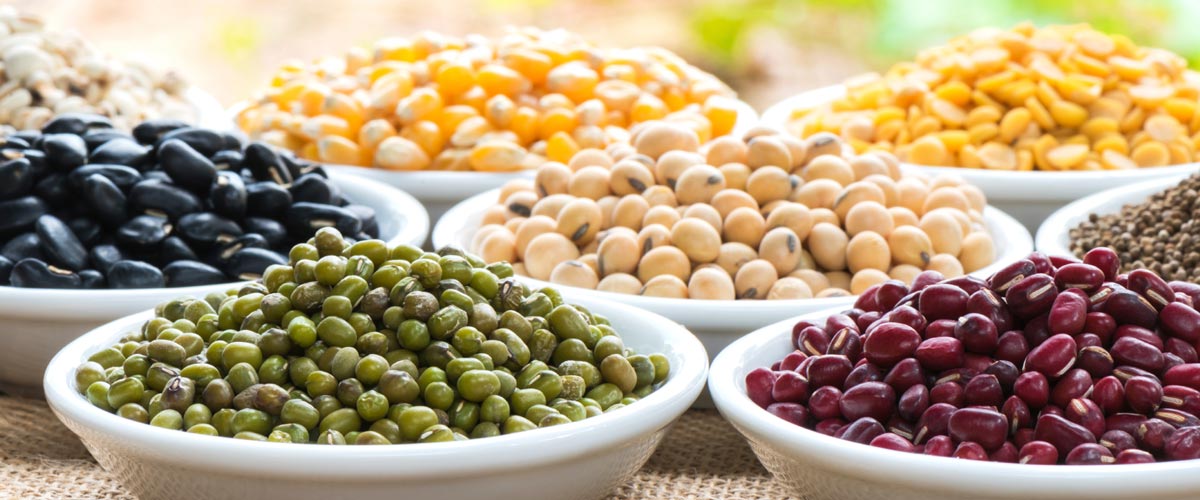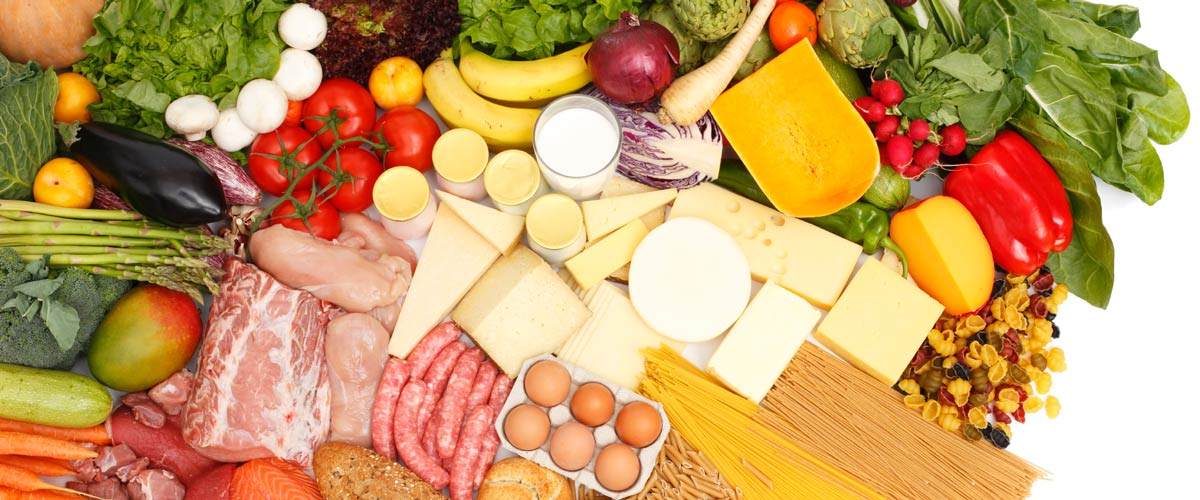Where did the last five years go?
Perhaps we were too busy waiting in line for our favorite cupcakes—hello Sprinkles! Maybe we decided kale was our super food of choice, or we finally gave in and replaced rice with quinoa. Whatever you were doing for the last five years with your diet, chances are, it was taken into account by the government and unleashed on us in the form of the new dietary guidelines.
So what are the things we must know about what we should eat moving forward?
“They really focused a lot on healthy eating patterns as a whole,” says Sharon George, registered dietician of 13 years with the New York Bariatric group. “Your eating patterns over time indicate how successful you’re going to be.”
Eating patterns, some of which are completely different to what they had told us in the past.
SODIUM
“The old recommendations were 1600 milligrams a day, the new recommendations are 2300 milligrams per day,” Says George. “Where they were so restricted in 2010, they’re saying ‘we’re not going to focus as much on sodium.’ This doesn’t mean we can consume french fries all day and not worry about our salt intake. Sodium still needs to be watched, just not as much as we had previously thought. It’s more about choosing foods that have been processed with less sodium, because that’s where a lot of the sodium hides in our diet. “Because sodium is found in so many foods, careful choices are needed in all food groups to reduce intake,” the guidelines read. “Strategies to lower sodium intake include using the Nutrition Facts label to compare sodium content of foods and choosing the product with less sodium and buying low-sodium, reduced sodium, or no-salt-added versions of products when available.”
SUGAR
 Where the guidelines have broken new ground is with our sugar intake. “For the first time they gave us real limits on added sugar,” says George. “Real limits meaning, ‘ok. You’re allowed to have 200 calories a day as added sugar.’ Which is really only one 16 ounce sugar drink a day.”
Where the guidelines have broken new ground is with our sugar intake. “For the first time they gave us real limits on added sugar,” says George. “Real limits meaning, ‘ok. You’re allowed to have 200 calories a day as added sugar.’ Which is really only one 16 ounce sugar drink a day.”
It comes as no surprise that sugar is being limited. The fight against diabetes nationwide is getting more and more serious and our diets could help limit the number of cases, especially in children. “They’re trying to give us a clearer way to control diabetic onset with children where people have healthier patterns; fruits, vegetables and greens,” says George. “So based on a daily diet plan, you could have 200 calories a day of sugar. That’s one 16oz sugar drink or 10% of our daily calories. For the first time, it’s a definitive answer. They’re saying that if you eat in a pattern that is low in added sugar it will boost healthy habits.”
So how do we do this? “In 2015 they’re telling us you can drink one 16 oz sugar drink.”
ALCOHOL
The focus on beverages alone is also new. “I don’t think the guidelines ever concentrated so much on eating healthy beverages before,” says George. “The alcohol recommendations were that you shouldn’t have more than 3 drinks a week. Now they’re saying that women can have one alcoholic beverage a day (depending on whether you’re having wine, liquor, or a mixed drink) and two for men.”
Alcohol isn’t going anywhere, so teaching people to consume it responsibly will do society a world of good. “People are going to drink alcohol, so they need to make a notation about the alcohol,” says George. “They really have it broken down to what alcohol consists of. It’s definitive and very spelled out this time.”
COFFEE
 There was good news for the coffee drinkers! “They’re now allowing three to five cups a day,” says George. “But there is a restriction—you can have 3-5 cups of coffee a day (unless you have cardiac problems or other listed conditions), but you’re not allowed to have any cream, milk or added sugar in it. Because if you were going to drink 5 cups of coffee a day with heavy cream and 3 tablespoons of sugar, those are the empty calories in beverages.”
There was good news for the coffee drinkers! “They’re now allowing three to five cups a day,” says George. “But there is a restriction—you can have 3-5 cups of coffee a day (unless you have cardiac problems or other listed conditions), but you’re not allowed to have any cream, milk or added sugar in it. Because if you were going to drink 5 cups of coffee a day with heavy cream and 3 tablespoons of sugar, those are the empty calories in beverages.”
Well we can’t win them all. We can have our three to five cups a day with low fat creamer options and it could help us avoid other deadly medical conditions. “You’re allowed to have low fat, 1% or fat free milk,” says George. “The research is showing that if you drink up to 3-5 cups a day it can actually reduce the risk of type 2 diabetes and heart disease.”
EGGS AND LEAN MEAT
 Grandfathers everywhere will let out a huge ‘I told you so,’ when it comes to egg’s. Turn’s out they are not as bad as we were being told. “Eggs are okay,” says George. “Before we always said limit your yolks because they’re high in cholesterol. Well research is showing that there is really no relationship between heart disease and dietary cholesterol. The cholesterol that your body produces is way more complicated than what they thought before and is being researched more because some people just have high cholesterol in their bodies that they are producing.”
Grandfathers everywhere will let out a huge ‘I told you so,’ when it comes to egg’s. Turn’s out they are not as bad as we were being told. “Eggs are okay,” says George. “Before we always said limit your yolks because they’re high in cholesterol. Well research is showing that there is really no relationship between heart disease and dietary cholesterol. The cholesterol that your body produces is way more complicated than what they thought before and is being researched more because some people just have high cholesterol in their bodies that they are producing.”
So we still can’t eat too many saturated fats, but it turns out that yolks are not considered saturated fats anymore. “They want you to limit saturated fats. They’re giving us an example that no more than 10% of your calorie intake a day should be made of saturated fats. They’re encouraging diets to also be reduced in red and processed meat but they’re not putting a limit on lean meat. The dietary cholesterol in lean meat is OK.”
YOUR CULTURE AND THE DIETARY GUIDELINES
For the first time ever, the guidelines have also included meal plans at varying calories for the ‘middle eastern,’ ‘greek’ and ‘vegetarian’ diets. “I think it’s important to be culturally varied because that’s the population that we are in, in this country,” says George. “I think recognizing that is very important.”
There’s always the same staples across the entire guidelines which are increase your fruits, vegetables, nuts and whole grains. The whole green thing really came in big time for 2010 and it’s continued. A few years ago, everything was fat-free. Now we’re saying no added sugar because that’s the wave of the last decade.”
EAT MORE OF…
We have heard this all before, but a reminder never hurts. “They’re really pushing whole grains and legumes,” says George. “Another thing they’re saying is that they want a very colorful diet. Dieticians always talk about eating rainbows. You want to eat different colors because they provide you with different nutrients.Variety is very important. Variety in protein is also very important. If you’re not following a vegetarian diet, the guidelines are saying you should be eating seafood, animal protein and plant-based protein. They’ve also included soy into the dairy and protein section because that’s the way things are moving. It keeps you less bored, when you’re eating a better variety of foods.”

IT’S FOOD MADE EASY
Obviously none of us like to read through page after page of complex material, even if it is to do with longevity and health. Sometimes it’s just too hard. But this time they took that into account too. “They’re making it easy,” says George. “I think education has a lot to do with it. Being educated on what the limitations are helps people and that’s exactly why we need guidelines. The fact that every five years they’re looking at the general lifestyle of people and incorporating that makes all the difference. I think they’re doing a really great job because they’re focusing on what matters for the most people.




